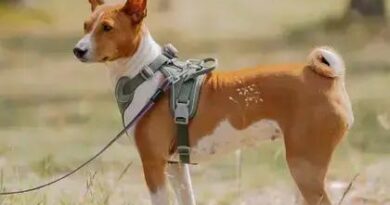What is Rabo
What is Rabo?
The term “Rabo” refers to the tail of a dog, an essential part of canine anatomy that serves multiple functions. The tail is not just a physical extension; it plays a crucial role in communication, balance, and even social interaction among dogs. Understanding what a rabo is can enhance your knowledge of dog behavior and health.
The Anatomy of a Rabo
A dog’s rabo is made up of vertebrae, muscles, and skin, covered with fur. The length and shape of the tail can vary significantly among different breeds, from the long, flowing tails of Golden Retrievers to the short, stubby tails of Bulldogs. This anatomical structure is vital for a dog’s overall mobility and agility.
Functions of a Dog’s Rabo
The primary function of a rabo is communication. Dogs use their tails to express emotions and intentions. A wagging tail often indicates excitement or happiness, while a lowered or tucked tail can signify fear or submission. Observing a dog’s tail can provide valuable insights into its mood and state of mind.
Rabo and Balance
In addition to communication, the rabo plays a significant role in maintaining balance. When dogs run, jump, or make sharp turns, their tails help them stabilize their bodies. This is particularly evident in agile breeds that require precision in their movements, such as Border Collies and Greyhounds.
Health Considerations for the Rabo
Like any other part of a dog’s body, the rabo can be susceptible to injuries and health issues. Common problems include fractures, infections, and skin conditions. Regular grooming and veterinary check-ups can help ensure that your dog’s tail remains healthy and free from complications.
Tail Docking: A Controversial Practice
Tail docking, the practice of surgically removing part of a dog’s tail, has been a topic of debate among dog owners and veterinarians. While some argue it is necessary for certain breeds for aesthetic or health reasons, others believe it is unnecessary and cruel. Understanding the implications of tail docking is essential for responsible pet ownership.
Rabo in Different Dog Breeds
Different dog breeds exhibit a wide variety of tail types, each adapted to their specific needs and characteristics. For instance, the curly tail of a Basenji is a breed-specific trait that aids in communication and balance, while the long, straight tail of a Labrador Retriever serves a different purpose in expressing emotions.
Training and the Rabo
Training a dog to respond to commands often involves using its rabo as a cue for behavior. For example, a dog that wags its tail when it sees its owner may be more inclined to follow commands. Understanding how a dog’s tail functions in training can improve the bond between the dog and its owner.
Rabo and Social Interactions
The rabo also plays a vital role in social interactions among dogs. When meeting other dogs, the position and movement of the tail can indicate friendliness or aggression. Observing these signals can help dog owners manage introductions and interactions in a safe and positive manner.




